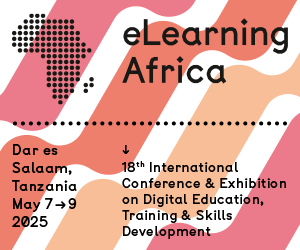Create media to learn about media
 Cambridge (UK), April 2007 - (by Kirsten Seegmüller) Innovative education uses computer games in order to make students learn better. Now children can create their own games - with the software MissionMaker. James Durran teaches at Parkside Community College, Cambridge, UK; as an 'Advanced Skills Teacher', he is involved in training other teachers as well as teaching students aged 11-16. He tested the tool.
Cambridge (UK), April 2007 - (by Kirsten Seegmüller) Innovative education uses computer games in order to make students learn better. Now children can create their own games - with the software MissionMaker. James Durran teaches at Parkside Community College, Cambridge, UK; as an 'Advanced Skills Teacher', he is involved in training other teachers as well as teaching students aged 11-16. He tested the tool.
James, have you ever programmed before?
James Durran: No, I have no programming experience, but I have been part of a project with the Centre for the Study of Children, Youth and the Media at the Institute of Education, London University and the company Immersive Education, which produces educational software. There I came into contact with Mission Maker, a games authoring package. My part has been to work with children aged of 12 and 13: in class we try out the software at various stages of development.
What types of games can they create?
James Durran: The genre is a sort of role-play adventure game. The player is a character in a fully realized three-dimensional environment. They have to work their way through mazes, interact with other characters, and solve puzzles in a virtual environment. It can even be a shooting game.
A shooting game? Isn't that quite dangerous when you consider increasing violence at schools?
James Durran: There was some discussion whether to include shooting as one of the elements in the game. If the game is meant to teach students how computer games work there is no point in sanitising the software. The students must be able to work with the systems, conventions, and narratives of computer games they are used to.
There are lots of debates whether this is harmful or not, but the games are being built in a supervised environment. In class we talk about the presence and consequences of violence in computer games. By the way, shooting is so easy to implement that students are not much interested in it. They prefer more complexity, more sophisticated and subtle game situations like puzzles and problems to solve.
Which elements can be included?
James Durran: You can import text, audio files, still images, moving image files and much more. The scope of educational content is very large. We use the production of games in the context of courses where they study computer games. They are learning about elements such as environments, economies, rule systems, and narrative. You can include a whole range of rooms and corridors of different styles and periods, you can include furniture and objects that characters can pick up and carry around. You can put doors and obstacles in, as well as rules - for example something specific happens if a door is opened or an object is placed in a certain spot.
This system of cause and effect defines the structure of the game; you can assign attributes to characters, and you can paste moving images and make them play or not play, according to what the player does.
Are the games the result of teamwork?
James Durran: The students tend to work in pairs or groups of three. This is a very powerful way to increase their speaking, listening, and social skills for cooperation and collaboration. This way they already learn teamwork at school.
How do the children proceed?
James Durran: The entire class creates one game, and each group is responsible for one fragment. The class first works out a narrative, for example saving the world from environmental disaster, and then breaks it down to narrative parts. The children tend to prefer topics with a moral imperative, which gives them an opportunity for additional learning in this field.
How useful is game creation for students who are not aiming at becoming a game programmer?
James Durran: This is not a vocational course, but a general preparation for participation in a society where these media are incredibly important and influential in people's lives. Media are part of today's culture, and it is vital for students to participate in and engage with them intellectually and become critical of them. Making the games involves broad education and transferable skills, such as problem-solving. It is all about creativity and imagination.
Don't you think that £ 2000 for the software package is a bit much for a school?
James Durran: Maybe that will put off quite a lot of schools from buying it. Schools will need to be very sure of the benefit and have a secure place for it in the curriculum before they spend this amount of money. One target group may not be the ordinary schools, but special centres that provide technical skills to children in the context of curricular enrichment.









